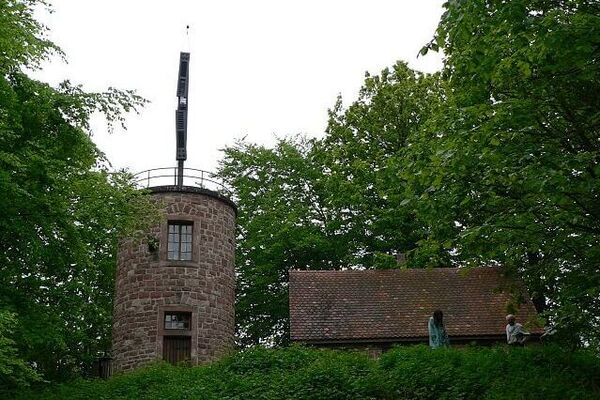Optical telegraphy, also known as semaphore telegraphy, was a revolutionary communication technology that predates radio. It involved the transmission of messages through visual signals, primarily using towers or semaphore stations. In this article, we will delve into the history, mechanics, and impact of optical telegraphy, shedding light on a forgotten communication technology that played a significant role before the advent of radio.
Table of Contents
Brief Explanation of Optical Telegraphy
Optical telegraphy was a system of communication designed to transmit messages over long distances using visual signals. It relied on a network of towers or stations positioned strategically to maintain line-of-sight communication. By using various visual codes or signals, such as flags, lights, or mechanical arms, messages could be relayed rapidly across vast distances. This technology revolutionized long-distance communication in a time when alternatives, such as messengers or carrier pigeons, were slow and unreliable.
Significance of Optical Telegraphy
Before the invention of radio, optical telegraphy was a significant communication technology, enabling rapid transmission of messages over long distances. It played a crucial role in military, diplomatic, and commercial sectors, facilitating quick and efficient communication between distant locations. The development of optical telegraphy networks allowed for the exchange of information like never before, bringing people closer and fostering the growth of societies and economies.
History of Optical Telegraphy
Optical telegraphy, also known as semaphore telegraphy, has a rich history dating back to ancient civilizations. It served as a crucial means of communication before the advent of radio technology. In its simplest form, optical telegraphy involves transmitting messages through visual signals.
The concept of optical telegraphy can be traced back to ancient civilizations such as Egypt and China, where beacon fires were used to convey messages over long distances. However, it was during the 18th and 19th centuries that optical telegraphy truly flourished.
One notable example is the Chappe telegraph system, developed by the French inventor Claude Chappe in the late 18th century. This system consisted of a series of towers with movable arms, known as semaphores, which could be arranged to form letters and words. These towers were strategically positioned at regular intervals, allowing messages to be relayed across great distances.
The development of optical telegraphy brought about major advancements in long-distance communication. It allowed for the transmission of messages at a much faster rate compared to traditional methods such as messengers or carrier pigeons. The use of optical telegraphy also enabled real-time communication, eliminating the need for waiting hours, or even days, for a message to reach its destination.
Throughout its history, various civilizations and countries embraced optical telegraphy. In addition to France, countries like England, the United States, and Russia established their own optical telegraph networks. These networks played a crucial role in enhancing communication and facilitating faster dissemination of information.
Over time, improvements in technology and infrastructure enhanced the efficiency and reliability of optical telegraphy. Innovations such as telescopes and improved semaphore designs allowed for more precise and accurate transmission of messages. The development of trained operators further improved the speed and accuracy of the system.
Despite its many advantages, optical telegraphy had its limitations. One significant challenge was its dependence on line-of-sight communication. In order for messages to be transmitted successfully, the signaling stations needed to have a clear line of sight. This meant that optical telegraphy was not suitable for long-distance communication over rough terrains or obstructed landscapes.
The decline of optical telegraphy came with the introduction of more advanced technologies, such as the electric telegraph. Electrical telegraphy offered faster and more reliable communication, ultimately overshadowing optical telegraphy. However, the legacy of optical telegraphy cannot be understated. It laid the foundation for future communication technologies and played a vital role in shaping the modern world we live in today.
Mechanics of Optical Telegraphy
The mechanics of optical telegraphy revolved around the transmission of messages through visual signals. This communication technology relied on the use of light and line-of-sight to convey information over long distances.
At its core, optical telegraphy utilized a simple principle: messages were encoded into a series of visual signals, such as the position of arms or flags, which could be easily observed from a distance. These signals were then transmitted along a network of towers or semaphore stations strategically placed within sight of each other.
There were several methods used for optical telegraphy communication, each with its own specific mechanics. One such method was the use of semaphore telegraphy, where large movable arms or paddles were positioned on top of towers. These arms could be adjusted into different configurations to represent letters, numbers, or specific messages.
Another method employed in optical telegraphy systems was the use of light signals. This involved the use of heliographs or signal lamps, which emitted flashes of light in a predetermined code. By manipulating the duration and frequency of these light signals, messages could be relayed across significant distances.
The significance of line-of-sight in optical telegraphy cannot be overstated. As the effectiveness of this communication method relied on the visibility between transmitting and receiving points, it was essential to establish networks of towers or semaphore stations within an unobstructed line of sight. This meant that geographical constraints, such as mountains or dense forests, could pose challenges to the practicality of optical telegraphy.
The use of towers or semaphore stations played a crucial role in facilitating the effectiveness of optical telegraphy. These structures were strategically positioned, often on high points or elevations, to ensure better line-of-sight visibility. They served as the intermediary points for transmitting and receiving messages, allowing for seamless communication across vast distances.
In conclusion, the mechanics of optical telegraphy encompassed the transmission of messages through visual signals, employing methods such as semaphore telegraphy and light signals. The use of line-of-sight and the establishment of towers or semaphore stations were integral to the success of optical telegraphy as a communication technology. Despite its limitations and the eventual rise of new technologies, optical telegraphy left a lasting legacy that shaped the future of communication systems.
Optical Telegraphy Networks
Optical telegraphy networks played a crucial role in establishing long-distance communication systems in various regions and countries. These networks were meticulously designed and organized, enabling the efficient transmission of messages through visual signals. The operation of these networks involved the use of towers or semaphore stations strategically placed within line-of-sight distances.
One notable example of an optical telegraphy network was the Chappe system in France. Developed in the late 18th century by the Chappe brothers, this network stretched across the country, connecting major cities and serving as a vital communication infrastructure. The Chappe system consisted of a series of towers with adjustable semaphore arms that could be positioned to represent different letters or characters.
Another significant optical telegraphy network was the Admiralty Semaphore system in England. This network was used by the British Navy to enable rapid communication between naval ports and to relay important messages during times of war. The Admiralty Semaphore system utilized a standardized code, allowing messages to be transmitted quickly and accurately.
The impact of these optical telegraphy networks on communication cannot be understated. They revolutionized long-distance communication by enabling messages to be transmitted at speeds previously thought impossible. These networks facilitated the rapid dissemination of information, bringing distant places closer together and allowing for more efficient coordination of military and administrative matters.
One notable optical telegraphy line was the one connecting Paris to Marseille in France. This communication line covered a distance of over 900 kilometers and allowed for messages to be sent between the two cities in a matter of hours. This line significantly improved communication between the capital and the important port city, shaping trade, politics, and cultural exchange.
Overall, optical telegraphy networks were a remarkable feat of engineering and organization. They provided a vital means of communication in an era before radio and laid the foundation for future advancements in telecommunications. These networks were crucial in connecting regions, facilitating trade, and influencing the development of modern communication systems.
Advantages and Limitations
Optical telegraphy, as a pre-radio communication technology, offered several advantages over other methods that were used during the same time period. One of the main benefits of optical telegraphy was its speed and efficiency compared to relying on messengers or carrier pigeons. Unlike messengers or pigeons, which could be delayed or intercepted, optical telegraphy allowed for near-instantaneous communication over long distances. This was especially advantageous in urgent situations or during military operations, where quick and reliable communication was crucial.
Another advantage of optical telegraphy was its ability to transmit messages over difficult terrains or across bodies of water. Messengers and carrier pigeons were limited by physical barriers and geographical obstacles, whereas optical telegraphy could overcome these challenges by using strategically placed towers or semaphore stations. This made optical telegraphy a particularly valuable form of communication in areas where conventional methods were impractical or impossible.
Despite its advantages, optical telegraphy also had its limitations. One of the main challenges faced by optical telegraphy systems was the requirement of a clear line-of-sight between the transmitting and receiving stations. This meant that communication could be disrupted or even halted in unfavorable weather conditions or due to the curvature of the Earth. Furthermore, optical telegraphy was limited by the availability of skilled operators who were trained in deciphering and transmitting messages using visual signals. This reliance on human operators could sometimes result in errors or misinterpretations, compromising the accuracy and reliability of the communication.
Overall, while optical telegraphy had significant advantages over other communication methods of its time, it also faced limitations that eventually contributed to its decline. The rise of new technologies, such as the electric telegraph, offered greater speed and reliability, eventually rendering optical telegraphy obsolete. However, the legacy of optical telegraphy can still be seen in the development and evolution of modern communication systems. The principles and techniques used in optical telegraphy laid the foundation for future advancements in long-distance communication, shaping the way we communicate and connect with one another today.
Decline and Legacy
Optical telegraphy, once a revolutionary communication technology, eventually faced its decline due to several factors. The rise of new technologies, such as the electric telegraph, played a significant role in rendering optical telegraphy obsolete. With the invention of the electric telegraph in the mid-19th century, communication became faster and more efficient, outperforming the visual signals of optical telegraphy.
The electric telegraph offered a more reliable and instantaneous means of long-distance communication, utilizing electrical currents to transmit messages instead of relying on line-of-sight visibility like optical telegraphy. This advancement allowed for faster transmission speeds and the capability to send messages across great distances without the need for physical towers or semaphore stations.
Despite its decline, optical telegraphy left a lasting impact and legacy on modern communication systems. It served as a precursor to the development of more advanced communication technologies, including radio and the internet. The concept of transmitting messages across long distances using visual signals paved the way for the creation of Morse code, a system of dots and dashes used in the electric telegraph and other telecommunication systems.
The legacy of optical telegraphy can also be seen in the use of visual signals in modern military communication. Semaphore signaling, a method employed by optical telegraphy, is still utilized today for maritime communication, particularly in naval operations. Additionally, the limitations and challenges faced by optical telegraphy systems, such as the dependence on favorable weather conditions and the limited range of transmission, provided valuable insights and lessons for the development of more reliable and versatile communication technologies.
In conclusion, optical telegraphy was a significant communication technology that played a crucial role before the advent of radio. While it eventually declined with the emergence of new technologies like the electric telegraph, its legacy can still be observed in various aspects of modern communication systems. Optical telegraphy laid the foundation for the development of more advanced technologies and contributed to the shaping of the future of communication.
Conclusion
In conclusion, optical telegraphy was a significant and often overlooked communication technology that played a crucial role in shaping the future of communication technologies. Through optical telegraphy, messages could be transmitted across long distances using visual signals, revolutionizing communication in the pre-radio era.
Throughout history, civilizations such as the ancient Egyptians, Greeks, and Romans utilized optical telegraphy to transmit messages efficiently. Over time, advancements and improvements were made in the mechanics of optical telegraphy, with various methods being used for communication. Line-of-sight and the use of towers or semaphore stations were essential for the successful transmission of messages.
Optical telegraphy networks were established in different regions and countries, allowing for the rapid and efficient exchange of information. The operation and organization of these networks played a vital role in ensuring seamless communication. Notable optical telegraphy lines, such as the Chappe system in France, left a lasting impact on communication.
One of the advantages of optical telegraphy over other communication methods of the time was its speed and reliability. It offered a faster alternative to using messengers or carrier pigeons to transmit messages. However, optical telegraphy also faced limitations and challenges, such as adverse weather conditions and the need for clear line-of-sight.
The decline of optical telegraphy came with the rise of new technologies, most notably the electric telegraph. These new technologies offered faster and more efficient means of communication, leading to the eventual abandonment of optical telegraphy. Despite its decline, optical telegraphy left a significant legacy, shaping the future of communication systems.
In summary, optical telegraphy was a forgotten communication technology that deserves recognition for its impact on the development of communication. It played a vital role in transmitting messages over long distances before the advent of radio. By understanding the history, mechanics, and impact of optical telegraphy, we can appreciate the strides made in communication technology and the role it continues to play in our modern world.




